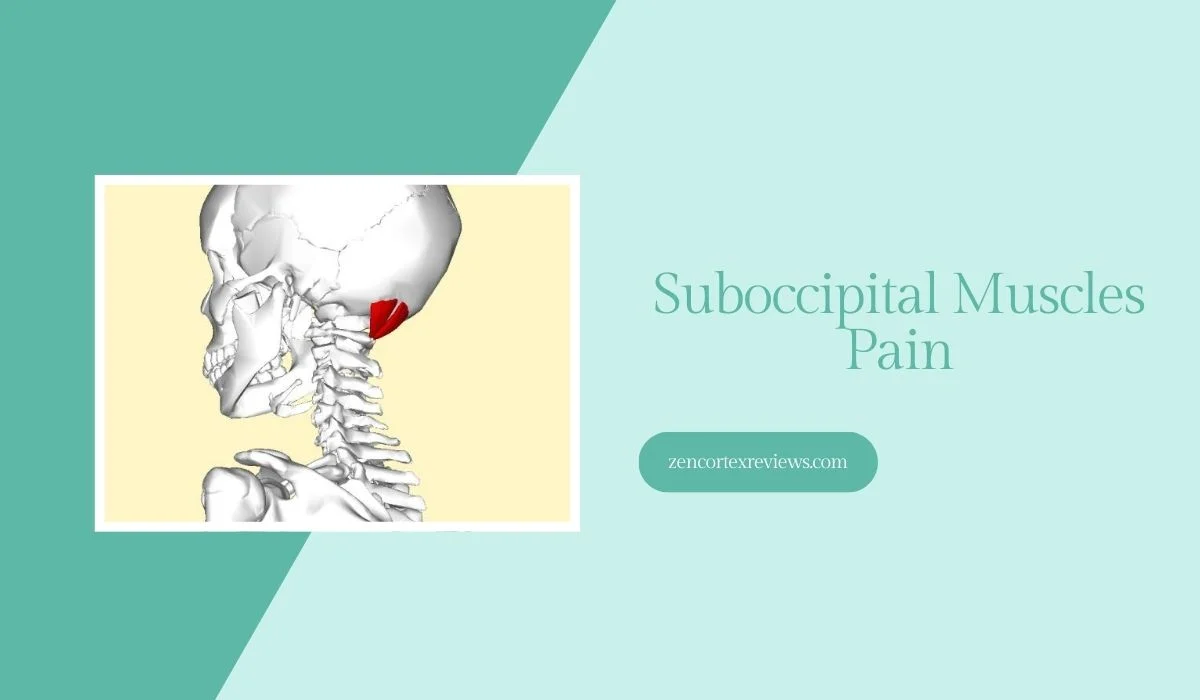Suboccipital Muscles Pain: Understanding and Alleviating the Tension
Nagging discomfort at the base of the skull? It could be suboccipital muscles pain. This condition strains the small muscles supporting the head, causing headaches, stiffness, and limited mobility. Explore natural remedies like massage, heat therapy, and herbal teas to find relief.

Disclaimer: Our recommendations are sincere, driven by the products’ benefits. When you buy through our links, we may earn a commission, backing our testing and development at no extra cost to you.
At the base of the skull, a group of small yet mighty muscles play a crucial role in supporting and moving the head. However, when these suboccipital muscles become strained or overworked, they can cause significant discomfort and pain, leading to what is known as suboccipital muscle pain. This often-overlooked condition can greatly impact one’s quality of life, making everyday activities a challenge.
Understanding Muscle Pain
What is Muscle Pain?

Muscle pain, also known as myalgia, is a common experience that can range from mild discomfort to severe, debilitating pain. It is often described as a dull ache, soreness, or persistent throbbing sensation in the affected muscles.
Causes of Muscle Pain
There are various causes of muscle pain, including:
- Overuse or strain: Repetitive motions or excessive use of a particular muscle group can lead to muscle strain and overuse injuries.
- Trauma or injury: Direct blows, sprains, or tears to the muscle fibers can result in acute muscle pain.
- Tension or stress: Emotional stress and anxiety can contribute to muscle tension and tightness, leading to pain.
- Poor posture: Maintaining improper posture for extended periods can strain and overwork certain muscle groups.
- Medical conditions: Certain medical conditions, such as fibromyalgia, arthritis, or autoimmune disorders, can cause chronic muscle pain.
Symptoms of Muscle Pain
The primary symptom of muscle pain is, of course, discomfort or soreness in the affected muscle or muscle group. Additional symptoms may include:
- Tenderness or knots in the muscle
- Limited range of motion
- Muscle weakness or fatigue
- Swelling or inflammation in the affected area
- Radiating pain or stiffness into surrounding areas
Understanding Suboccipital Muscle Pain
What are the Suboccipital Muscles? The suboccipital muscles are a group of four pairs of small muscles located at the base of the skull, at the top of the neck. These muscles include the rectus capitis posterior major, rectus capitis posterior minor, obliquus capitis superior, and obliquus capitis inferior.
Causes of Suboccipital Muscles Pain
There are several potential causes of suboccipital muscle pain, including:
- Poor posture: Prolonged periods of sitting or standing with improper head and neck alignment can strain these muscles.
- Whiplash or trauma: Sudden jerking motions of the head, such as in a car accident or sports injury, can lead to suboccipital muscle strain or spasm.
- Stress and tension: Emotional stress and anxiety can contribute to muscle tension and tightness in the suboccipital region.
- Arthritis or degenerative conditions: Conditions that affect the cervical spine and surrounding structures can put additional strain on the suboccipital muscles.
Symptoms of Suboccipital Muscle Pain
The primary symptom of suboccipital muscle pain is a dull, aching discomfort at the base of the skull, often described as a tension headache or stiff neck. Other symptoms may include:
- Tenderness or knots in the suboccipital region
- Limited range of motion in the neck
- Headaches, particularly at the back of the head
- Pain or discomfort when turning or tilting the head
- Radiating pain or stiffness in the shoulders or upper back
Managing Suboccipital Muscle Pain
While over-the-counter pain medications can provide temporary relief, there are several natural remedies and lifestyle changes that can help alleviate suboccipital muscle pain and address the underlying cause.
Natural Remedies for Suboccipital Muscle Pain
- Suboccipital Muscle Release Techniques: Specific massage techniques, such as suboccipital muscle release or trigger point therapy, can help alleviate tension and knots in these muscles, promoting relaxation and pain relief.
- Heat or Cold Therapy: Applying a warm compress or heat pack to the suboccipital region can help relax the muscles, while cold therapy can reduce inflammation and numb the pain.
- Stretching and Exercise: Gentle stretching exercises and movements that target the suboccipital muscles and improve neck mobility can help alleviate stiffness and prevent further strain.
- Herbal Remedies: Certain herbs, such as chamomile, peppermint, turmeric, and ginger, have been used traditionally for their anti-inflammatory and muscle-soothing properties, potentially providing relief for suboccipital muscle pain.
Lifestyle Changes for Suboccipital Muscle Pain Relief
- Posture Awareness: Maintaining proper posture, especially when sitting or using electronic devices, can help reduce strain on the suboccipital muscles.
- Stress Management: Engaging in stress-reduction techniques, such as meditation, deep breathing exercises, or yoga, can help alleviate muscle tension caused by emotional stress.
- Ergonomic Workstation: Adjusting your workstation to promote proper neck and head alignment can prevent suboccipital muscle strain and discomfort.
- Regular Exercise: Incorporating gentle exercises that promote flexibility and strengthen the neck and shoulder muscles can help support the suboccipital muscles and prevent future pain.
Just like taking care of our muscles, we should also focus on our ear health. The ear is one of our sensory organs and its important to take good care of it. Products like Zencortex help in relieving ear pain and make it healthy.
When to Seek Medical Attention
While suboccipital muscle pain can often be managed with self-care techniques, it is essential to seek medical attention if the pain is severe, persistent, or accompanied by other concerning symptoms such as:
- Numbness or tingling in the arms or legs
- Dizziness or vertigo
- Difficulty swallowing or speaking
- Severe headaches or migraines
These symptoms may indicate an underlying condition that requires professional medical evaluation and treatment.
Related: Understanding How Long Does an Inner Ear Infection Last
Conclusion
Suboccipital muscle pain, while often overlooked, can significantly impact one’s quality of life. By understanding the causes and symptoms, and incorporating natural remedies and lifestyle changes, individuals can find relief and prevent further strain on these crucial muscles. However, it is essential to seek medical attention if the pain persists or is accompanied by concerning symptoms, as it may indicate a more serious underlying condition. With proper care and attention, suboccipital muscle pain can be managed, allowing for improved mobility, reduced discomfort, and an overall better quality of life.
Lindsay Martinez
Lindsay Martinez, Au.D., is a licensed audiologist with over 10 years of experience in the field of hearing healthcare. She earned her Doctor of Audiology degree from the University of California, Los Angeles, and currently practices at Martinez Hearing Clinic, a leading audiology practice in the San Francisco Bay Area. As an expert in diagnosing and treating a wide range of hearing disorders, Dr. Martinez specializes in fitting advanced hearing aids and assistive listening devices. She is a fellow of the American Academy of Audiology and has published numerous peer-reviewed articles on topics such as noise-induced hearing loss and the latest innovations in hearing technology. Passionate about patient education, Dr. Martinez is committed to helping her patients improve their hearing and overall quality of life.
